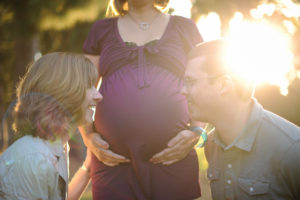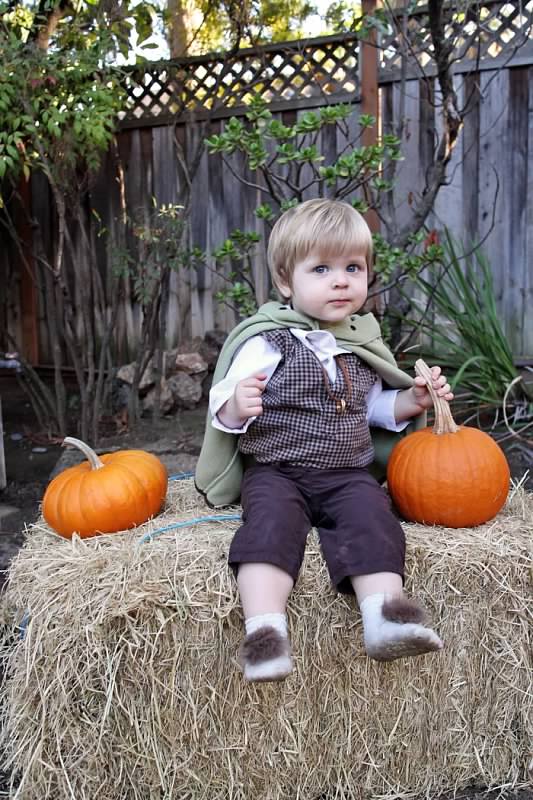 “My issue wasn’t getting pregnant, but staying pregnant,” recalls Sarah. “I was pregnant many times. But, I had recurrent early pregnancy loss. Every time I was pregnant, it was lost very early on – around eight weeks.”
“My issue wasn’t getting pregnant, but staying pregnant,” recalls Sarah. “I was pregnant many times. But, I had recurrent early pregnancy loss. Every time I was pregnant, it was lost very early on – around eight weeks.”
The couple persisted in their attempts to get pregnant naturally on their own for a year and a half before seeking help from Sarah’s gynecologist. He performed scans and ordered tests to identify possible reasons why Sarah could become pregnant but couldn’t maintain it through birth. The results, unfortunately, were inconclusive.
Sarah and Nathan Keeney agreed to try a few rounds of intrauterine insemination (IUI). A common form of artificial insemination, IUI places millions of sperm into a woman’s uterus immediately prior to or during ovulation.
“We didn’t get pregnant,” Sarah says.
Next step: IVF
Although Sarah and Nathan kept their infertility experience mostly to themselves, they did inform a few close family and friends that they planned to pursue in vitro fertilization (IVF). A family friend who is a nurse recommended that the Keeneys look into Reproductive Science Center of the Bay Area (RSCBA), and specifically, Dr. Deborah Wachs.
“My husband and I went to the website and watched the videos of interviews with the doctors. Dr. Wachs seemed great in the video,” Sarah says. “And when we went in for our consultation, she was wonderful. She and her staff offered a really good blend of compassion and education, giving us as many medical details as we wanted.”
With Dr. Wachs and the whole RSCBA staff on their side, the Keeneys started all over again.
“We did two IUIs, two fresh IVF transfers and one frozen embryo transfer,” Sarah recalls. “All five times, I did get pregnant, but each time we had a loss early on.”
At this point in their journey, with only one frozen embryo left, the Keeneys began considering surrogacy.
“It was really important for me to have closure in terms of being able to carry our baby on my own. But once we closed the door on me maintaining a pregnancy, I was actually able to turn the corner and get excited about the next step,” says Sarah.
“Instead of trying to do another transfer and have another loss, we felt like our final attempt needed to be with the surrogate,” she adds. “I feel confident that we made the right decision at the right time.”
Finding a surrogate mother
To allow the genes of both Sarah and Nathan to be present in their child, they decided to move forward with the surrogacy where the Keeneys’ frozen embryo would be implanted into another woman’s uterus to carry the pregnancy to term. They decided to work with an agency to find the right surrogate mother, and Dr. Wachs referred them to an agency in San Diego.
“It’s kind of like online dating where we had a profile and so did potential surrogates,” says Sarah. “We saw Racheal’s profile and felt very comfortable with her on paper. The way she described it was that surrogacy was something in her heart that she wanted to do for someone else. I think it’s the most amazing gift a person can give.”
After a video call, then an in-person meeting, the Keeneys and Racheal moved forward. They flew her to San Francisco, and their embryo was successfully transferred at RSC.
“We went down a few times when she was pregnant, and she came up to see us a few times,” says Sarah. “She sent me a photo of her every week of the pregnancy so I could watch her belly grow.”
Healthy pregnancy, healthy baby
 While Racheal carried the Keeneys’ baby they had already named Daniel, Sarah was busy with a project of her own.
While Racheal carried the Keeneys’ baby they had already named Daniel, Sarah was busy with a project of her own.
“About six months before Daniel was born I started taking medication and used a pump to induce lactation. I pumped every day, every two hours,” says Sarah. “Before, I didn’t even know that it was possible, but it was something I felt like I could contribute.”
A week before Racheal’s due date, the Keeneys drove down to San Diego. They were in the room – Sarah in the bed with Racheal as she pushed – when Daniel was born.
For the first three months after Daniel’s birth, Racheal sent breast milk via airmail. Other moms also generously donated to add to the milk of Sarah and Racheal. And for his first year, Daniel was exclusively breastfed. For Sarah and Nathan, it was all part of the journey.
Full hearts, together
 “I think when you go through as much as we did to have a family, you have an appreciation for it that other people cannot fathom,” says Sarah. “When you’ve had a long journey like we did, it makes it all the more worthwhile.”
“I think when you go through as much as we did to have a family, you have an appreciation for it that other people cannot fathom,” says Sarah. “When you’ve had a long journey like we did, it makes it all the more worthwhile.”
But, it can be very lonely.
Sarah says she benefited from other fertility patients sharing their stories before she and Nathan made their decision. She talked to one acquaintance who had IVF and also to a person who worked with a surrogate.
“That was very helpful. It’s nice to feel like you’re not the only one. It was all new territory for us. There was a point where I thought we would never try IVF because it sounded like a huge ordeal. Then we would never do surrogacy because it sounded so extreme,” says Sarah. “I want other couples to know that there are things that you think you won’t try but you do.”
“It’s hard to put into words what the gift of surrogacy is and means to someone who wants to be a parent,” says Sarah. “It really is the greatest gift someone can give and that anyone can receive. A few weeks after our son was born, our surrogate told me that her heart was full. Now, mine is too.”

Breaking Barriers, Building Families
Since 1983, we have pioneered fertility treatment for every kind of family. We want to help you achieve your dream of having a baby.
Request appointment